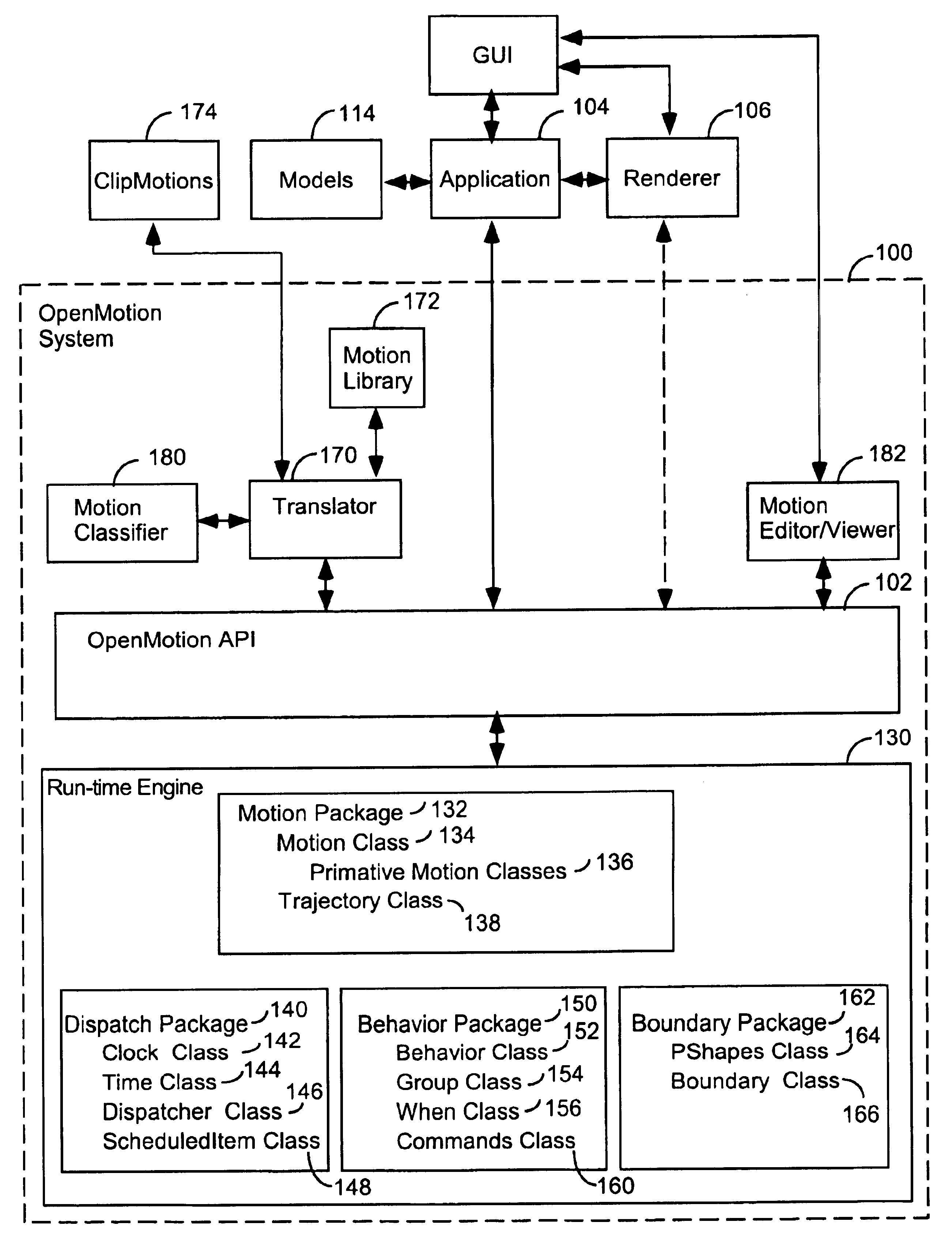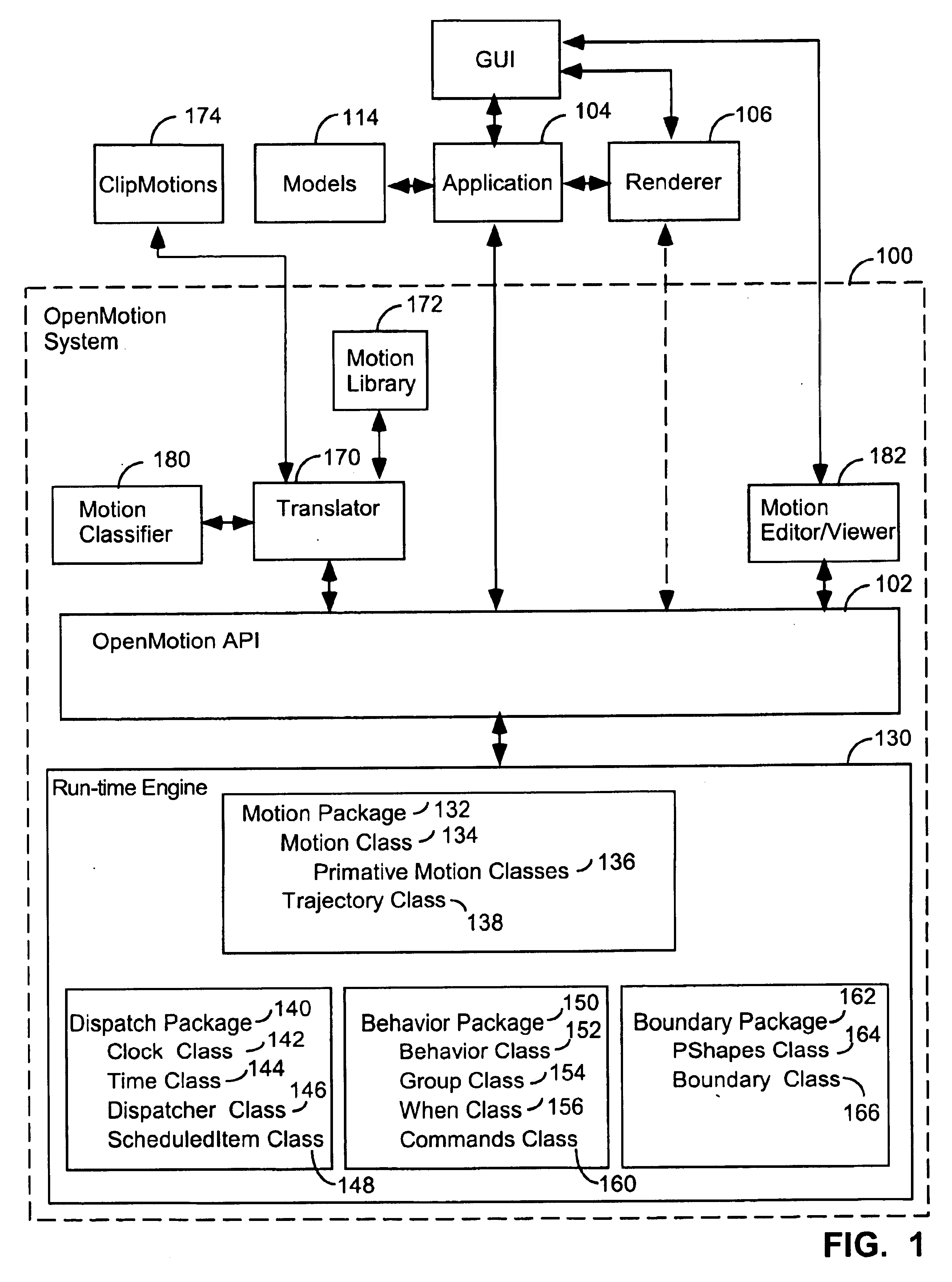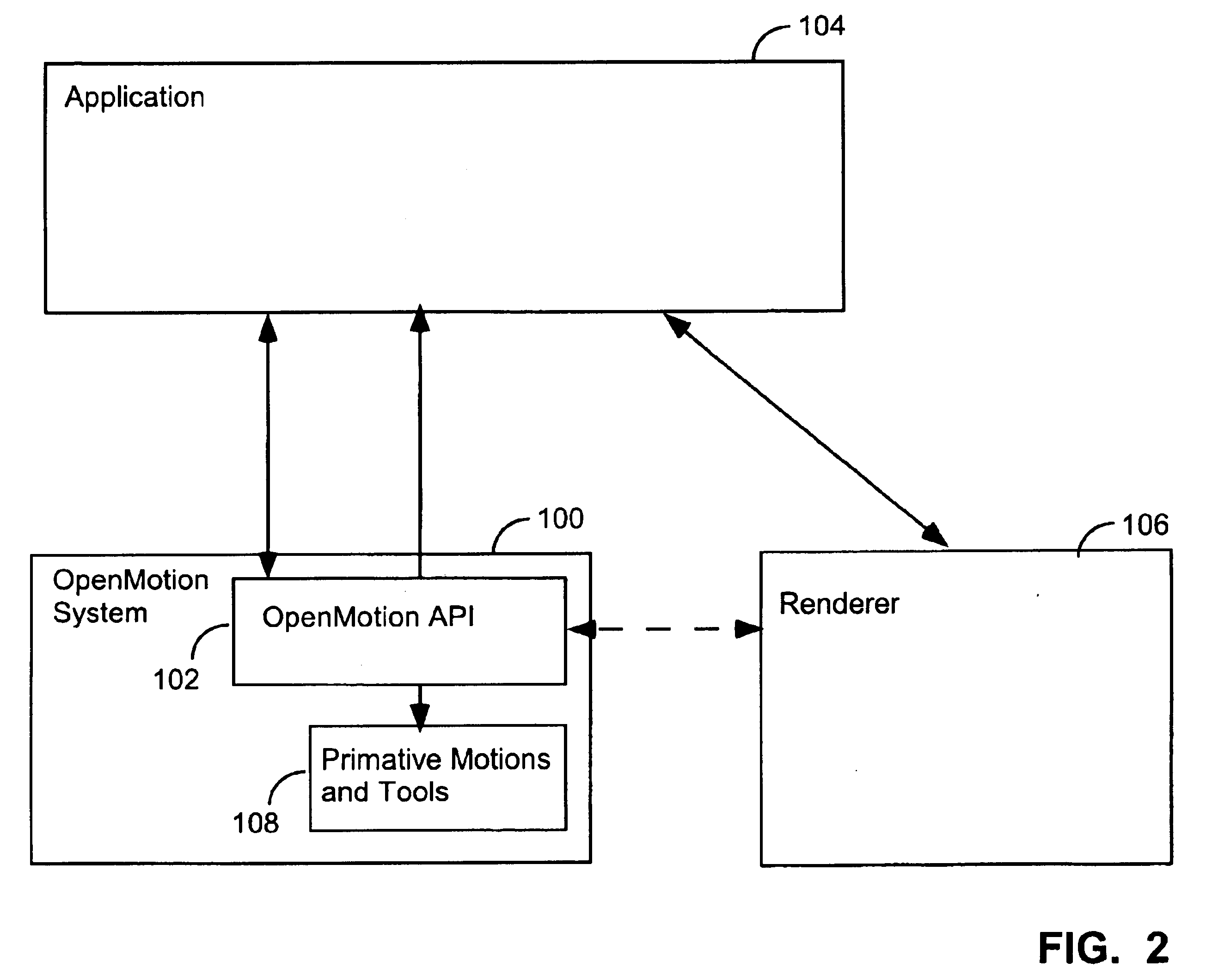Apparatuses, methods, computer programming, and propagated signals for modeling motion in computer applications
a technology of propagated signals and computer programs, applied in the direction of electrical programme control, instruments, program control, etc., can solve the problems of limited 3d applications, severe limitations in manipulation and navigation, and inability to fully realize the full potential of 3d graphics, so as to improve rendering attributes, facilitate the task of 3d model building, and improve the effect of performan
- Summary
- Abstract
- Description
- Claims
- Application Information
AI Technical Summary
Benefits of technology
Problems solved by technology
Method used
Image
Examples
Embodiment Construction
. . .
6.1 OVERVIEW . . .
6.1.1 The OpenMotion System . . .
6.1.2 The API And Its Relation To Application, Modeling, and Rendering Programs . . .
6.1.3 The Run Time Engine . . .
6.1.4 The Motion Translator, the OpenMotion Format, ClipMotions and the CMF . . .
6.1.5 Motion-Enabled Objects . . .
6.1.6 Encryption . . .
6.1.7 Motion Editor / Viewer . . .
6.1.8 Description Of The Types Of Motions Supported By The System . . .
6.2 OPENMOTION API PROGRAMMER's GUIDE . . .
6.2.1 Scope . . .
6.2.2 Overview . . .
6.2.2.1 Namespace . . .
6.2.2.2 Update loop . . .
6.2.2.2.1 Loop in application . . .
6.2.2.2.2 Loop in graphic system . . .
6.2.3 Principal types . . .
6.2.4 Expressions . . .
6.2.4.1 Values . . .
6.2.4.2 Notation . . .
6.2.4.3 Predefined values . . .
6.2.4.4 Vars . . .
6.2.4.5 Callbacks . . .
6.2.4.6 Temporal predicates . . .
6.2.5 Motions . . .
6.2.5.1 Parameters . . .
6.2.5.1.1 Initial conditions . . .
6.2.5.1.2 Behavior . . .
6.2.5.2 Attributes . . .
6.2.5.2.1 Current Attributes Of Motion . . .
6.2.5.2.2 Predict ...
PUM
 Login to View More
Login to View More Abstract
Description
Claims
Application Information
 Login to View More
Login to View More - R&D
- Intellectual Property
- Life Sciences
- Materials
- Tech Scout
- Unparalleled Data Quality
- Higher Quality Content
- 60% Fewer Hallucinations
Browse by: Latest US Patents, China's latest patents, Technical Efficacy Thesaurus, Application Domain, Technology Topic, Popular Technical Reports.
© 2025 PatSnap. All rights reserved.Legal|Privacy policy|Modern Slavery Act Transparency Statement|Sitemap|About US| Contact US: help@patsnap.com



